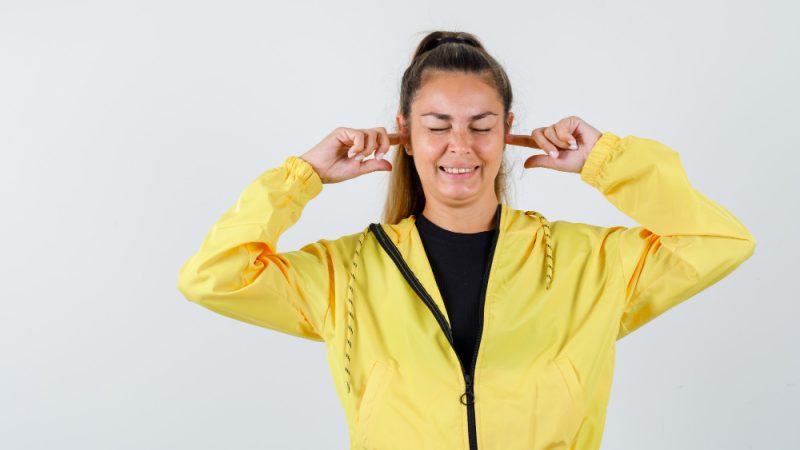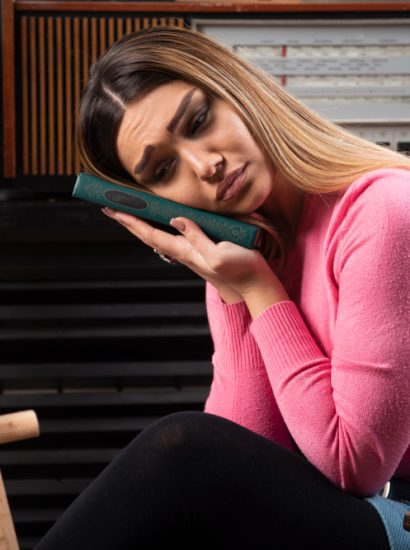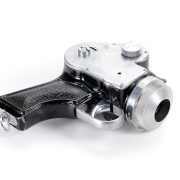In a world filled with constant noise—chatter, traffic, tapping, and background hums—some people experience extreme discomfort or distress from certain sounds. This condition is known as misophonia. For those living with it, ordinary noises can trigger anxiety, anger, or panic. Fortunately, technology and awareness have brought solutions that offer real relief. Among them, misophonia earplugs stand out as a simple yet powerful tool to help individuals regain calm and control in their daily lives.
In this article, we will explore what misophonia is, how earplugs can help, the different types available, and practical tips for choosing and using them effectively.
Understanding Misophonia
Misophonia literally means “hatred of sound.” It is a condition where specific noises—such as chewing, clicking pens, typing, sniffing, or tapping—trigger strong emotional reactions. These sounds are often harmless to others but can be unbearable for someone with misophonia.
People who experience misophonia describe it as more than just irritation; it can cause intense stress, anger, or the urge to escape the sound immediately. The condition varies in intensity from person to person, but it often affects daily routines, work environments, and social relationships.
Although misophonia is not officially classified as a hearing disorder, it involves how the brain processes sound. Over time, individuals may develop avoidance behaviors to protect themselves from triggers, which can impact mental well-being.
How Misophonia Affects Daily Life
Living with misophonia can be exhausting. Everyday situations—like being in an office, eating at a restaurant, or attending family gatherings—can become overwhelming. The constant need to avoid or manage noise can lead to social isolation and anxiety.
For students, concentration in classrooms may become difficult if nearby noises trigger a response. In the workplace, open offices with background chatter or keyboard clicks can heighten stress. At home, even small sounds like clock ticking or breathing patterns may feel intrusive.
This is where misophonia earplugs can make a significant difference, offering both comfort and protection without disconnecting users from their surroundings entirely.
What Are Misophonia Earplugs?
Misophonia earplugs are specially designed devices that reduce or filter specific sounds that commonly trigger discomfort. Unlike regular foam earplugs that block all noise, misophonia earplugs are made to target certain frequencies while allowing users to remain aware of their environment.
These earplugs are often made from soft, medical-grade silicone and come in various styles and sizes. Some models use advanced acoustic filters that reduce harmful or irritating frequencies while maintaining speech clarity. Others offer adjustable settings or electronic features for personalized sound control.
How Misophonia Earplugs Work
The science behind misophonia earplugs lies in sound filtering. Instead of silencing all noise, these earplugs are engineered to reduce the intensity of trigger sounds without completely isolating the wearer.
They work by:
- Lowering high-frequency sounds such as chewing, pen clicks, or clinking dishes.
- Maintaining conversation clarity so users can still communicate easily.
- Balancing noise reduction to create a calm yet natural listening environment.
Advanced models use acoustic filters that specifically dampen problematic noise levels. Some high-tech versions even include Bluetooth and active noise control, allowing users to adjust settings through mobile apps.
Benefits of Using Misophonia Earplugs
Misophonia earplugs provide relief in many ways beyond just sound reduction.
- Emotional Calm: By minimizing triggers, they help reduce feelings of anxiety and frustration.
- Improved Focus: They make it easier to concentrate in noisy environments like offices or classrooms.
- Social Comfort: Users can participate in conversations or gatherings without feeling overwhelmed.
- Better Sleep: Some people wear them at night to block out background noise that disturbs rest.
- Portability and Discretion: Modern designs are small, comfortable, and barely noticeable.
Overall, they empower users to take back control of their daily lives and engage in activities that might otherwise feel impossible.
Types of Misophonia Earplugs
There are several types of misophonia earplugs to suit different needs and lifestyles.
- Acoustic Filter Earplugs: Designed for moderate sound filtering while keeping environmental awareness.
- Electronic Noise-Canceling Earplugs: Use advanced technology to actively reduce unwanted sounds.
- Custom Molded Earplugs: Made to fit the user’s ear perfectly for comfort and effective noise reduction.
- Foam or Silicone Earplugs: Affordable options that block a wide range of sounds, ideal for sleep or travel.
Each type offers unique advantages. The best choice depends on individual triggers, comfort preferences, and situations where they will be used most often.
Choosing the Right Misophonia Earplugs
Selecting the right pair of earplugs requires understanding your specific needs. Consider these factors:
- Noise Sensitivity Level: Determine how much noise reduction you require.
- Comfort and Fit: Look for earplugs made from soft, hypoallergenic materials.
- Environment: If you need them for work, social events, or sleep, choose a suitable model for that setting.
- Reusability: Some earplugs are disposable, while others are washable and reusable.
- Technology Preference: Decide whether you prefer traditional filters or electronic noise cancellation.
Testing a few types before settling on one can help find the perfect match for long-term comfort and effectiveness.
How to Use and Care for Earplugs
Proper use and maintenance ensure that your earplugs remain effective and hygienic.
- Insertion: Gently twist and insert the earplug into your ear canal until it forms a snug seal.
- Cleaning: Wash reusable earplugs regularly with mild soap and water, then air dry completely.
- Storage: Keep them in a clean, dry case to prevent dirt or damage.
- Replacement: Replace foam or silicone earplugs every few months or when they lose elasticity.
Following these simple steps helps extend the life of your earplugs and keeps them safe to use daily.
Additional Coping Strategies for Misophonia
While earplugs provide excellent relief, combining them with other coping strategies can offer greater comfort.
- Mindfulness and Relaxation Techniques: Deep breathing and meditation help manage emotional responses.
- White Noise or Background Music: Playing gentle ambient sounds can mask triggers.
- Therapy: Cognitive behavioral therapy or sound therapy may reduce sensitivity over time.
- Support Groups: Sharing experiences with others who have misophonia can provide understanding and encouragement.
Adopting a combination of physical tools and emotional techniques leads to more effective long-term management.
Misophonia Earplugs and the Future of Sound Management
With rising awareness of sensory conditions, innovation in sound protection is advancing quickly. Modern designs are becoming smaller, smarter, and more adaptive. Future earplugs may feature artificial intelligence that adjusts automatically to surroundings and personal sound profiles.
As research on misophonia grows, technology will continue to improve to meet the needs of those seeking calm in noisy environments. Misophonia earplugs are not just a product—they represent a shift toward recognizing sensory health as a key part of overall well-being.
Conclusion
Misophonia can make daily life challenging, but relief is possible. Misophonia earplugs offer a practical and effective way to find peace in a noisy world. They allow individuals to live, work, and socialize comfortably without constant fear of triggering sounds.
Choosing the right earplugs, using them correctly, and combining them with coping strategies can transform the experience of sound from overwhelming to manageable. Whether you are looking for quiet moments at home, focus at work, or comfort in social situations, misophonia earplugs can help you rediscover calm and confidence in your everyday life.
FAQs
1. What is misophonia?
Misophonia is a condition in which specific sounds, such as chewing or tapping, trigger intense emotional reactions like anger or anxiety. It is related to how the brain processes sound rather than a problem with hearing.
2. How do misophonia earplugs help?
They reduce the volume and intensity of trigger sounds while allowing users to stay aware of their surroundings. This helps minimize emotional distress and improve comfort in noisy environments.
3. Can regular earplugs work for misophonia?
Regular earplugs can offer some relief but often block all sound, which may cause discomfort or isolation. Misophonia earplugs are designed to filter specific frequencies, making them more suitable for daily use.
4. Are misophonia earplugs safe to use every day?
Yes, as long as they fit properly and are cleaned regularly. They are made from soft, safe materials suitable for prolonged wear in work, study, or relaxation settings.
5. Where can I buy misophonia earplugs?
They are available online, at audiology clinics, and in stores that specialize in hearing protection. It is best to read reviews and consult with an audiologist if you have specific sound sensitivities.
Also read: 10 Secrets of Blue Toning: The Secret to Silky, Brass-Free Hair









